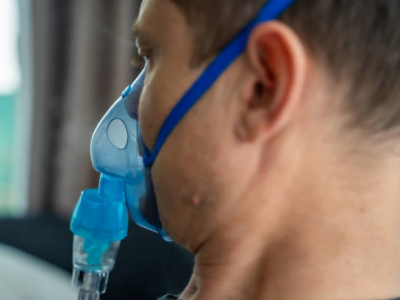Study: Mass distribution of azithromycin reduces childhood mortality in Africa
A study today in the New England Journal of Medicine reports that childhood mortality in sub-Saharan African communities randomly assigned to mass distribution of azithromycin was lower than in those assigned a placebo. But the authors warn that resistance emerging from mass distribution of the antibiotic could curb or reverse any potential benefit.
In a cluster-randomized trial conducted by an international team of researchers, communities in Malawi, Niger, and Tanzania were assigned to four biannual mass distributions of either oral azithromycin or placebo to children ages 1 to 59 months. Because azithromycin has been shown to reduce rates of infectious diseases like malaria, trachoma, and pneumonia in poor rural communities, and a case-control study in Ethiopia suggested mass distribution of the drug might reduce childhood mortality, the investigators wanted to see if mass distribution in three geographically distinct areas in Africa could have an impact on childhood mortality.
A total of 1,533 communities underwent randomization, with 97,047 children in the azithromycin group and 93,191 in the placebo group. Over five census visits, 323,302 person-years were monitored. At the end of the trial, the annual mortality rate for eligible children in the three countries was 14.6 deaths per 1,000 person-years in the communities that received azithromycin and 16.5 deaths per 1,000 person-years in the communities that received placebo. Mortality was 13.5% lower overall in the communities that received azithromycin, with a larger impact seen in Niger (18.1% lower) than in Malawi (5.7% lower) and Tanzania (3.4% lower). Children in the ages 1 to 5 months who received azithromycin saw the greatest benefit, with 24.9% lower mortality compared with those who received placebo.
The trial did not investigate how azithromycin prevented death, but the authors of the study say research into that question is already underway. In addition, they say further follow-up is warranted to determine whether the mortality effect observed in the trial changes with subsequent rounds of treatment. That could provide insight into the potential impact of side effects and emerging resistance.
They conclude, "Any policy that recommends mass distribution of oral azithromycin to address childhood mortality would need to consider not only cost but also the risk of side effects, especially the potential for the induction or amplification of antibiotic resistance."
Apr 26 N Engl J Med study
Studies assess effect of probiotics in C difficile infection
Two studies today in Infection Control and Hospital Epidemiology suggest that probiotics may be a prevention tool for Clostridium difficile infection (CDI).
In the first study, an international group of researchers analyzed 18 randomized controlled trials with data on 6,851 patients that compared probiotic prophylaxis to placebo or to no treatment and that reported CDI as an outcome. They found that probiotics reduced CDI odds by nearly two-thirds in both the unadjusted model (odds ratio [OR] 0.37) and the adjusted model (OR 0.35). In addition, a subgroup analysis suggested that, compared to no probiotics, multispecies probiotics were more beneficial than single species probiotics, as was using probiotics in clinical settings where the CDI risk was greater than 5%. Odds for serious adverse events were similar in both groups.
The authors of the study concluded that the results provide moderate quality evidence for probiotic prophylaxis may be a useful and safe CDI prevention strategy. "While it's not a perfect solution for a bacterium that has proven very difficult to prevent and treat, probiotics could offer patients another line of defense," lead author Bradley Johnson, PhD, of Dalhousie University said in a press release from journal publisher the Society for Healthcare Epidemiology of America (SHEA).
In the second study, a separate team of researchers evaluated a before-and-after quality improvement intervention program in which all eligible antibiotic recipients at a tertiary care hospital received capsules containing a three-probiotic mixture, to be taken within 12 hours of their initial dose of antibiotics. Comparing the hospital-onset CDI incidence during the 12-month baseline and intervention periods, the researchers found that the incidence rate was similar—6.9 per 10,000 patient days in the baseline period vs. 7.0 per 10,000 patient days in the intervention period. But they also detected a significant decrease in CDI during the final 6 months of the intervention compared with the first 6 months. Overall adherence to the protocol was low, with only 26% of eligible patients receiving a probiotic.
The authors say the delayed effect may have been related to poor adherence to the protocol for probiotic administration and a delayed gradual reduction in environmental contamination.
Apr 26 Infect Control Hosp Epidemiol study #1
Apr 26 Infect Control Hosp Epidemiol study #2
Apr 26 SHEA press release
CARB-X to fund development of next-generation aminoglycoside
CARB-X today announced an initial award of up to $2.4 million to biopharmaceutical company Achaogen for the development of a next-generation aminoglycoside antibiotic.
According to a press release from CARB-X (the Combating Antibiotic Resistant Bacteria Biopharmaceutical Accelerator), the funding will help Achaogen further develop an aminoglycoside that has been engineered to overcome resistance mechanisms. The hope is that this next-generation aminoglycoside will be able to treat drug-resistant pathogens such as Enterobacteriaceae, Pseudomonas aeruginosa, and Acinetobacter baumannii.
"We are honored to have CARB-X's support in advancing our novel aminoglycoside program, which we believe has significant potential to address the growing multi-drug resistance problem in gram-negative bacteria," Achaogen chief scientific officer Lee Swem, PhD, said in the press release.
Achaogen could receive up to $9.6 million more in two additional stages based on the achievement of certain project milestones.
Since it was established in 2016, CARB-X has awarded nearly $80 million to accelerate the development of new antibiotics, diagnostics, and other products to address antibiotic resistance.
Apr 26 CARB-X press release














